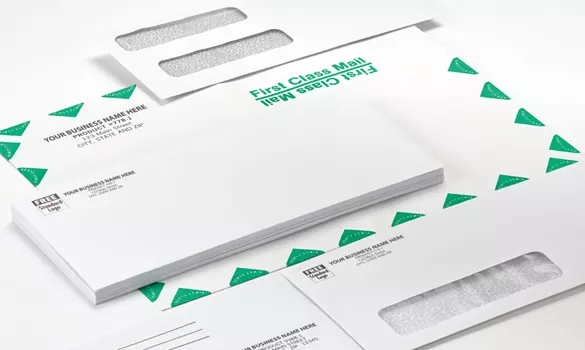Filing taxes yearly can seem daunting, especially if you need an organized system. With deadlines, forms, receipts, and documentation to track, it’s easy for important tax information to become lost or disorganized. However, setting up a simple filing system using Taxwise envelopes can help bring order to your tax paperwork and support smart tax planning year-round.
Here are the top 10 creative ways to leverage Taxwise envelopes to stay on top of your taxes.
1. Organize Documents by Category
One of the best ways to use Taxwise envelopes is to dedicate individual envelopes to different tax document categories. Common categories include income documents, expenses, deductions, capital gains/losses, and investment statements.
By storing related papers together, finding what you need when tax time rolls around is much easier. You can also see if you need receipts or records for particular categories. Organizing up front saves frustration later when you’re rushing to complete returns. Taxwise envelopes are great for keeping your documents organized by category, like medical expenses, charitable donations, business expenses, etc. This helps you stay on top of your tax paperwork and have everything you need at your fingertips for filing.
2. Monthly Filing
Instead of letting receipts and records pile up all year, stay organized by setting up 12 envelopes – one for each month. As the month progresses, file away related receipts, expense documentation, income records, and other tax papers in the designated envelope.
Then, at the month’s end, reviewing totals and making notes for your annual taxes is simple. This rolling monthly filing system prevents last-minute scrambling to assemble a year’s paperwork.
3. Deduction Tracking
Dedicate envelopes to track important itemized deductions like mortgage interest, property taxes, state income taxes, charitable donations, and more. Note estimated totals for the year on the outside of each envelope and periodically update as new receipts are added. You’ll have a running tally of deductions without sorting through piles of paper come tax season. Bonus – it’s easy to spot any deduction opportunities you may have missed during the year for additional savings.
4. Quarterly Estimated Taxes
If you owe quarterly estimated tax payments, individual envelopes make tracking what you’ve paid and when simple. Label the envelopes Q1, Q2, Q3, and Q4 and keep relevant estimated tax vouchers and proof of payments filed inside.
At tax time, you’ll have immediate visibility into estimated payments to complete Schedule ES or other appropriate forms accurately. This system eliminates errors from guessing at prior quarterly filings.
5. Tax Year Comparisons
Comparing tax information from previous years helps assess change opportunities and forecast the upcoming year’s liabilities or refunds. Dedicate separate Taxwise envelopes to prior tax year returns and any relevant supporting documents.
Quickly pull out prior year information when needed without digging through mixed paperwork. The envelopes also make it easy to store completed returns year after year for future reference if questions arise.
6. Expense Receipts
Rather than cramming receipts unsorted into a shoebox, give individual envelopes to common expense categories like vehicle, travel, meals & entertainment and household items. File receipts into matching envelopes throughout the year. It only takes a minute, yet it saves much time combing through piles later.
The categorized receipts also provide an excellent snapshot of total expenses to help substantiate any related deductions.
7. Income Records
Keep pay stubs, Forms W-2, 1099s, and records of other income sources organized so they can be easily found. Dedicate separate envelopes for regular wages, side jobs, investments, retirement distributions, and other income types.
Store relevant documents as they arrive to avoid chasing down missing statements later. Identifying income sources as they occur ensures complete and accurate reporting on your tax return.
8. Tax Notices and Correspondence
Rather than haphazardly filing important tax letters, design an envelope for ongoing tax correspondence with the IRS or state. This includes notices, billing statements, responses, proof of prior payments – anything tax-related that is not a formal return. Keeping correspondence centrally filed avoids missed deadlines or duplicate payments due to losing paperwork in the shuffle. It also documents the tax timeline in one easy-to-reference place.
9. Investment Documentation
If you hold stocks, mutual funds, or other investments, it’s crucial to properly track cost basis, sale prices, dividends, and any related transactions. Dedicate individual envelopes for unique investment accounts – or separate ones for cost basis, sales, and income received.
Include brokerage statements, buy/sell confirmations, 1099-B forms, and other pertinent investment data. An organized “investment tax packet” in labeled envelopes ensures that capital gains/losses are accurately reported.
10. Tax Planning Notes
Finally, dedicate an envelope solely for notes related to tax strategies. This could include calculations for optimal filing status, notes on additional deductions to claim, your wish list for next year’s tax planning opportunities, or reminders of documents still needed.
Review notes before filing each year’s return and periodically throughout the year. Proactive planning is critical to maximizing savings – and staying organized supports the process.
Wrapping Up
Taking just a small amount of time to set up a system of labelled Taxwise envelopes can pay considerable dividends in tax savings and sanity. Staying organized can be a simple filing cabinet – just a box of envelopes and basic categorization.
The ease of reference this provides avoids stress and errors associated with last-minute, disorganized tax preparation. Whether a seasoned preparer or a self-filing novice, implementing even a few of these envelope strategies will streamline your short- and long-term taxes.
